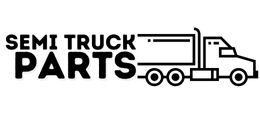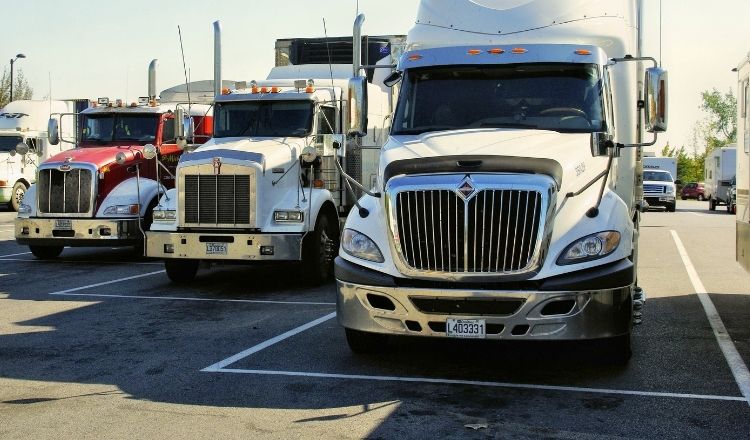The Complete Guide to Essential Truck Body Parts Every Truck Owner Needs
Bumpers: Safeguarding Your Truck Against Collisions
Bumpers are more than just aesthetic features on trucks; they serve as critical safety components, safeguarding your vehicle against collisions and impacts. Positioned at the front and rear ends, bumpers absorb shock and minimize damage in the event of accidents, protecting both the truck’s occupants and its structural integrity.
When it comes to choosing bumpers, truck owners have a variety of options to consider. Steel bumpers offer robust protection, ideal for off-road enthusiasts or those operating in rugged environments. Aluminum bumpers provide a lighter alternative without compromising on durability, suitable for urban driving or fuel efficiency. Additionally, aftermarket bumpers often come with enhanced features such as integrated winch mounts or auxiliary lighting, adding utility and versatility to your truck.
Regular maintenance of bumpers is essential to ensure their effectiveness. Inspecting for cracks, dents, or rust should be part of your routine checks, as any compromise in the bumper’s integrity can reduce its ability to absorb impact. Moreover, keeping bumpers clean from dirt and debris not only maintains their appearance but also prevents corrosion, prolonging their lifespan.
In summary, bumpers play a crucial role in protecting your truck from collisions and preserving its value. By investing in high-quality bumpers and performing regular maintenance, you can enhance both the safety and longevity of your vehicle on the road.
Mirrors: Enhancing Visibility and Safety on the Road
Mirrors are indispensable components of any truck, providing crucial visibility to the driver and enhancing safety on the road. From side mirrors to rearview mirrors and towing mirrors, each serves a distinct purpose in ensuring awareness of surrounding traffic and obstacles.
Side mirrors, also known as wing mirrors, extend the driver’s field of vision, minimizing blind spots and facilitating lane changes and parking maneuvers. They should be properly adjusted to provide optimal coverage of adjacent lanes without obstructing the view. Additionally, wide-angle or convex mirrors can further enhance visibility, especially when towing trailers or navigating tight spaces.
Rearview mirrors offer a glimpse of the area behind the truck, aiding in reversing and monitoring traffic approaching from the rear. Regularly checking rearview mirrors while driving helps anticipate potential hazards and make informed decisions on the road. Some modern trucks are equipped with auto-dimming rearview mirrors to reduce glare from headlights at night, improving visibility and reducing driver fatigue.
Towing mirrors are essential for safely towing trailers or other vehicles, providing a wider field of vision to monitor the extended length of the convoy. Adjustable and extendable towing mirrors ensure optimal visibility regardless of the load size or towing conditions.
To maintain the effectiveness of mirrors, it’s essential to keep them clean and free of debris or obstructions. Regularly inspecting for cracks or damage and promptly replacing damaged mirrors is crucial for uninterrupted visibility and safe driving.
In conclusion, mirrors are integral components of truck safety, offering enhanced visibility and situational awareness to drivers. By understanding their functionalities and importance, truck owners can prioritize mirror maintenance and invest in quality mirrors to ensure safe travels on the road.
Fenders: Protecting Your Truck from Road Debris and Hazards
Fenders are essential components of any truck, serving as protective barriers between the wheels and the surrounding environment. Their primary function is to shield the truck’s wheels and undercarriage from road debris, gravel, mud, and other hazards encountered during travel.
Constructed from durable materials such as steel, aluminum, or composite plastics, fenders are designed to withstand impact and maintain their structural integrity under harsh conditions. They come in various styles and sizes to accommodate different truck models and wheel configurations.
In addition to protecting the truck’s exterior, fenders also play a role in aerodynamics and fuel efficiency. Well-designed fenders help streamline airflow around the vehicle, reducing drag and improving overall performance on the road.
Regular maintenance of fenders is essential to ensure their effectiveness and prolong their lifespan. Inspecting fenders for signs of damage, such as cracks, dents, or rust, should be part of routine vehicle checks. Prompt repair or replacement of damaged fenders prevents further deterioration and maintains the truck’s aesthetic appeal.
Some truck owners choose to customize their fenders for added style or functionality. Aftermarket fender flares, for example, provide additional coverage and protection against larger tires or aggressive off-road driving. These accessories not only enhance the truck’s appearance but also offer practical benefits in terms of tire clearance and debris deflection.
In summary, fenders are critical components of truck safety and maintenance, providing protection against road debris and hazards while contributing to overall performance and aesthetics. By investing in quality fenders and performing regular inspections, truck owners can ensure their vehicles remain well-protected and looking their best for years to come.
Grille Guards: Safeguarding Your Truck’s Front End
Grille guards are robust protective accessories designed to shield the front end of trucks from damage caused by collisions, debris, and wildlife encounters. Positioned in front of the grille and often extending to cover the headlights, grille guards provide an additional layer of defense for the truck’s vital components, including the engine and radiator.
Constructed from heavy-duty materials such as steel or aluminum, grille guards are engineered to absorb impact and distribute force away from the truck’s frame, minimizing damage in the event of accidents. Some grille guards feature reinforced tubing or mesh patterns for added strength and protection, making them suitable for off-road use or harsh driving conditions.
In addition to their protective function, grille guards can enhance the aesthetic appeal of trucks, giving them a rugged and assertive appearance. They come in various designs and finishes to complement different truck styles and preferences, allowing owners to customize their vehicles while adding practical utility.
Beyond protection, grille guards offer additional utility by providing mounting points for auxiliary lighting, winches, or other accessories. This versatility enhances the truck’s capability for off-road adventures or utility work, making grille guards a popular choice among truck enthusiasts and professionals alike.
Regular maintenance of grille guards is essential to ensure their effectiveness and longevity. Inspecting for signs of damage, corrosion, or loose fittings should be part of routine vehicle checks, with any issues addressed promptly to prevent further deterioration.
In summary, grille guards are indispensable accessories for truck owners looking to safeguard their vehicles against frontal impacts and enhance their appearance and utility. By investing in a quality grille guard and performing regular maintenance, truck owners can enjoy peace of mind knowing their vehicles are well-protected on and off the road.
Running Boards: Enhancing Accessibility and Style
Running boards are practical accessories that offer convenience and accessibility to truck owners, especially those with taller vehicles or lifted suspensions. Mounted along the sides of the truck, running boards provide a sturdy step surface for easier entry and exit from the cabin, as well as accessing items stored in the truck bed.
One of the primary benefits of running boards is their ability to improve accessibility, particularly for passengers and drivers with limited mobility. They offer a secure foothold for stepping into the truck, reducing the risk of slips and falls, especially in wet or icy conditions. Additionally, running boards can support the weight of heavy loads or equipment, making them useful for loading and unloading cargo.
Beyond functionality, running boards also contribute to the aesthetic appeal of trucks, enhancing their overall appearance and style. They come in various designs, materials, and finishes to complement different truck models and personal preferences, allowing owners to customize their vehicles according to their tastes.
When selecting running boards, truck owners should consider factors such as durability, ease of installation, and compatibility with their vehicle’s design. Options range from traditional tubular running boards made of steel or aluminum to modern retractable or powered steps with integrated lighting and electronic controls.
Regular maintenance of running boards is essential to ensure their longevity and performance. Periodically cleaning them to remove dirt, mud, and road salt prevents corrosion and preserves their appearance. Inspecting for signs of damage, such as rust or loose fasteners, allows for timely repairs or replacements to maintain safety and functionality.
In summary, running boards are practical accessories that enhance accessibility and style for truck owners. By choosing quality running boards and performing regular maintenance, truck owners can enjoy the convenience and aesthetic appeal they provide while ensuring long-lasting durability and performance.
Mud Flaps: Protecting Your Truck and Others on the Road
Mud flaps, also known as splash guards or mud guards, are essential accessories for trucks that play a crucial role in protecting both the vehicle itself and other motorists on the road. Positioned behind the tires, mud flaps help prevent debris, mud, water, and other road contaminants from being kicked up and impacting nearby vehicles, pedestrians, or infrastructure.
The primary function of mud flaps is to minimize the spray and debris generated by rotating tires, especially in wet or muddy conditions. By deflecting these materials downward and away from the truck’s body, mud flaps help maintain visibility for both the driver and other motorists, reducing the risk of accidents caused by obscured vision or flying debris.
In addition to enhancing safety, mud flaps also contribute to the overall cleanliness and maintenance of roads and highways. By containing debris and preventing it from being scattered across road surfaces, mud flaps help reduce environmental pollution and minimize damage to infrastructure, such as road signs, guardrails, and paint markings.
When choosing mud flaps for your truck, it’s essential to consider factors such as size, material, and compatibility with your vehicle’s design. Options range from basic rubber or plastic flaps to more durable and customizable options, including molded splash guards or stainless steel plates.
Installing mud flaps is a relatively straightforward process, typically requiring basic hand tools and hardware provided with the flaps. Proper positioning and secure attachment are essential to ensure effective coverage and prevent flaps from becoming loose or detached while driving.
Regular maintenance of mud flaps involves inspecting them for signs of damage, such as cracks, tears, or missing hardware, and replacing them as needed. Additionally, keeping mud flaps clean by regularly washing them helps prevent buildup of dirt, mud, or road salt, prolonging their lifespan and effectiveness.
In summary, mud flaps are essential accessories for trucks that provide protection against debris and enhance safety for both the vehicle and other road users. By choosing quality mud flaps and performing regular maintenance, truck owners can ensure their vehicles remain safe, clean, and compliant with road regulations.
Headlights and Taillights: Illuminating the Road Ahead and Behind
Headlights and taillights are fundamental components of any vehicle, including trucks, playing a critical role in providing visibility and signaling intentions to other drivers on the road. Properly functioning headlights illuminate the road ahead, while taillights alert drivers behind of your presence, intentions, and actions.
Headlights serve as the primary source of illumination for driving at night or in low-light conditions, allowing the driver to see the road, obstacles, and potential hazards ahead. They also enhance visibility during inclement weather, such as fog, rain, or snow, ensuring safe navigation even in adverse conditions. Modern trucks often feature advanced headlight systems, including LED or HID bulbs, which provide brighter and more energy-efficient lighting compared to traditional halogen bulbs.
Taillights, located at the rear of the truck, serve multiple purposes, including indicating braking, signaling turns, and increasing visibility to vehicles following behind. Functioning taillights are essential for maintaining safe distances between vehicles and preventing rear-end collisions, especially in heavy traffic or adverse weather conditions. Additionally, taillights may incorporate features such as brake lights, turn signals, and reverse lights, each serving a specific function to communicate the driver’s intentions effectively.
Regular maintenance of headlights and taillights is crucial to ensure optimal performance and safety on the road. This includes checking for burnt-out bulbs, cloudy or cracked lenses, and proper alignment of the light beams. Timely replacement of damaged or malfunctioning lights is essential to maintain visibility and comply with road regulations.
In summary, headlights and taillights are indispensable safety features of trucks, providing illumination and signaling to ensure safe travels on the road. By prioritizing maintenance and investing in quality lighting systems, truck owners can enhance visibility, reduce the risk of accidents, and promote overall road safety for themselves and other motorists.
Conclusion: Investing in the Safety and Longevity of Your Truck
Maintaining essential truck body parts is not just about aesthetics; it’s about safeguarding your investment and ensuring the safety and longevity of your vehicle. Each component, from bumpers to headlights, plays a critical role in protecting your truck and its occupants on the road.
Bumpers serve as the first line of defense against collisions, while mirrors enhance visibility and situational awareness. Fenders shield the wheels and undercarriage from debris, while grille guards protect the front end from damage. Running boards provide accessibility and style, while mud flaps keep your truck and the roads clean. Finally, headlights and taillights illuminate the way forward and signal your intentions to other drivers.
By investing in high-quality body parts and accessories and performing regular maintenance, you can ensure that your truck remains safe, reliable, and visually appealing for years to come. Whether you use your truck for work or leisure, prioritizing its upkeep is essential for your peace of mind and the safety of everyone on the road.
Remember to inspect your truck regularly for signs of wear and tear, and address any issues promptly to prevent further damage. Whether it’s replacing a cracked mirror or installing new mud flaps, taking proactive measures will help you avoid costly repairs and potential accidents down the road.
In conclusion, by understanding the importance of each truck body part and taking proactive steps to maintain them, you can enjoy worry-free driving and maximize the lifespan of your beloved vehicle. So, invest in the safety and longevity of your truck today, and reap the benefits for miles to come.
For detailed information, you can contact us at Truck Body Parts


